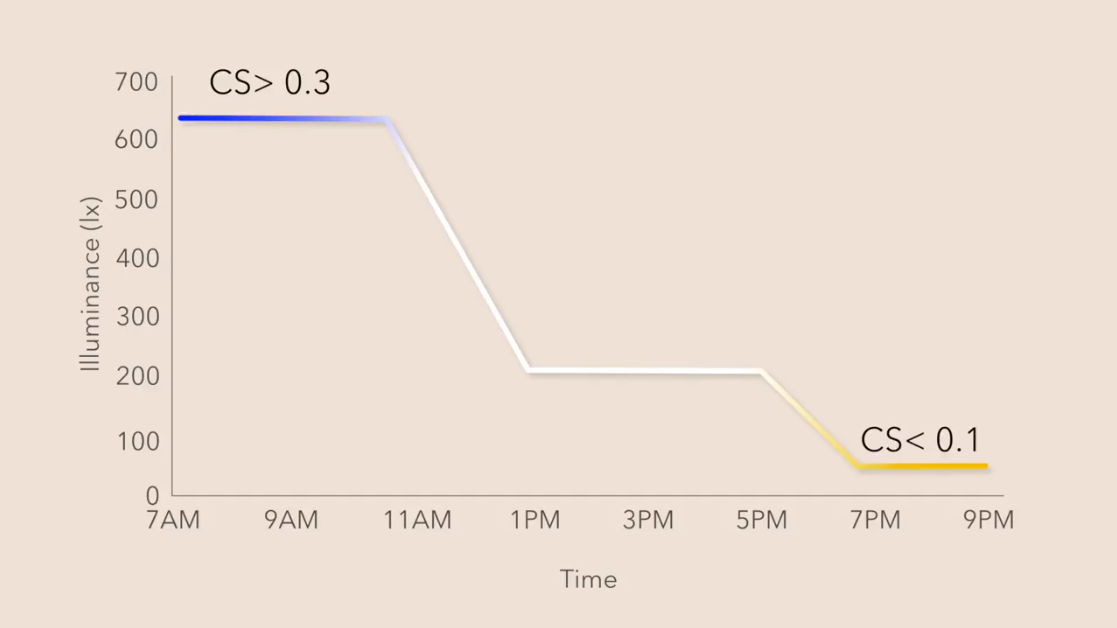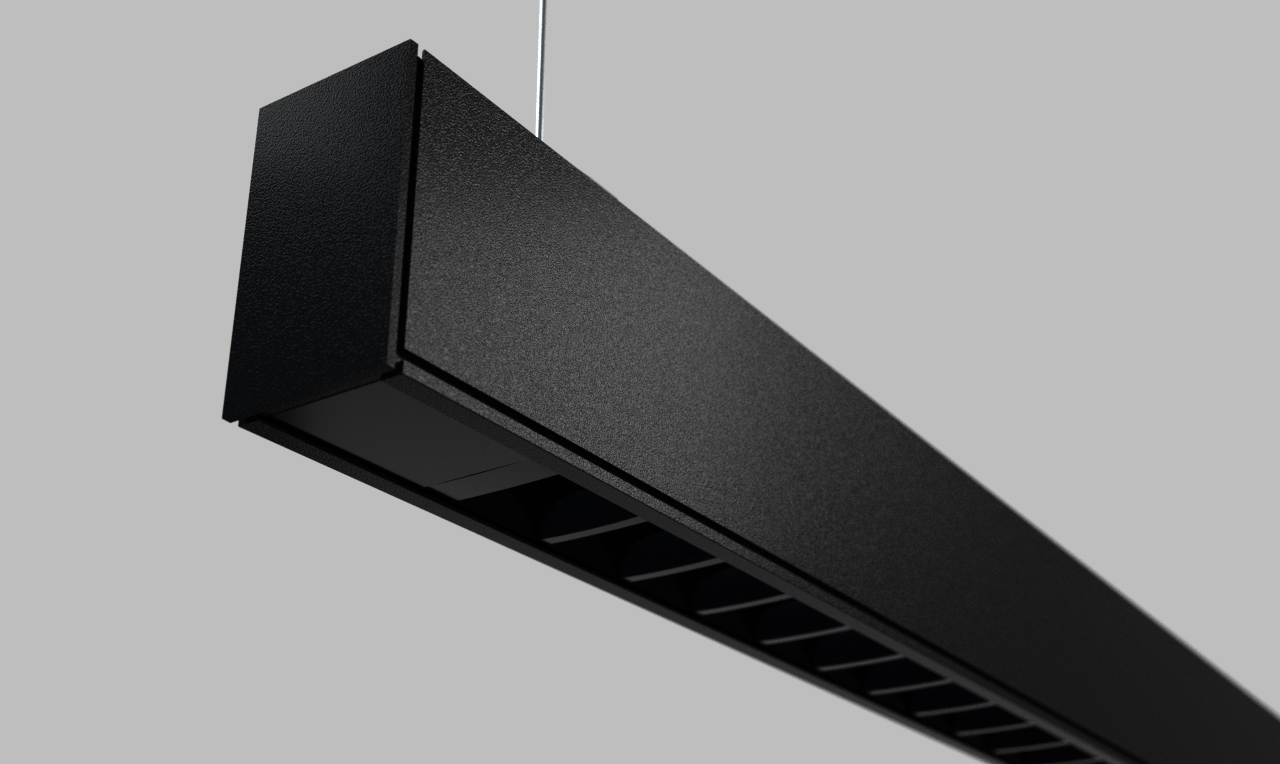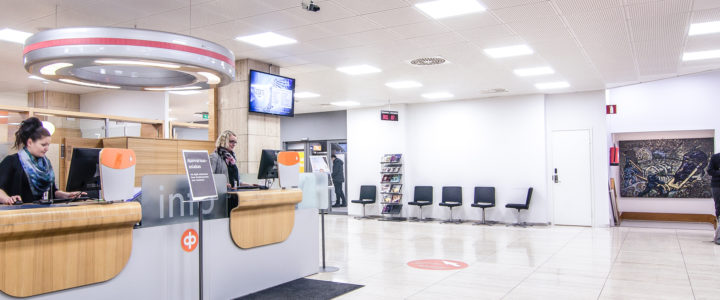Talk to our lighting experts  +358 20 125 5800
+358 20 125 5800

September 18, 2020
3 Aspects of Office Lighting
Office lighting is one of the things people easily take for granted. It’s there, but you don’t think about it much – unless it’s disturbing you.
Office lighting, however, is not just a must-have and it’s not there just to remove discomfort or provide the compulsory amount of light. Instead, it’s much more than that. Office lighting affects the energy consumption and carbon footprint of our buildings, supports the well-being and alertness of office workers and facilitates building management by providing valuable data for property owners.
In this article, we focus on three different aspects of office lighting: the people, the environment and the data. Under these topics, you will dive into the concept of human centric lighting, reflect on the ecological aspects of office lighting and ponder upon the possibilities of office lighting in building management.
1. People: Human Centric Office Lighting
In Europe, office lighting design follows the indoor lighting standard SFS-EN 12464-1. The standard specifies the recommended minimum light levels for different work tasks, including glare and colour rendering values. For writing, typing, reading and data processing and for conference and meeting rooms, the standard recommends a light level of 500 lux.
While standards are important to set the minimum requirements, standards are designed for standard people. In this case, for people with normal visual capacity. But what is normal exactly?
As individuals, we are all different and there are various factors that affect our visual capacity. Among other things, our age. As we grow older, less and less light reaches the back of our eye causing our vision to deteriorate. As a result, the light levels on-task should be two to three times higher for older adults compared to younger people.
Ideally, the individual needs of office workers are taken into account in the design of office lighting. Today, more and more offices are thus embracing the concept of workstation lighting.
Workstation lighting allows the adjustment of lighting in a specific workspace without affecting the other stations.
Workstation lighting opens up a great opportunity to implement human centric lighting for office workers. In recent years, the concept of HCL, also known as circadian lighting, has caught the attention of the whole lighting industry; both scientists and practitioners. And why? Because of the benefits and the vast potential for human health and well-being.
In short, human centric lighting recognizes light as the main stimulus that helps people’s circadian clock keep a synchronized rhythm with the 24-hour day. For this reason, lighting in an office space should not be static throughout the workday but rather mimic the natural daylight by providing brighter and blueish light in the morning and gradually dimmer, yellowish light towards the evening. With a synchronized internal clock, people are ought to feel better, more energized and productive at work.

Image: The Lighting Research Center LRC recommends getting high Circadian stimulus in the morning with bright, blueish white light and low CS in the evening with dim, yellowish white light. (Source The LRC Light and health -video series, part #2)
To help lighting professionals select light sources and light levels that will increase the potential for circadian-effective light exposure, the Lighting Research Center has released a CS (Circadian Stimulus) calculator available online. With the help of the calculator, lighting designers can design and implement office lighting that supports the well-being and energy levels of the office workers.
In practice, the real-life applications of human centric lighting are still quite rare but clearly on the rise. With more industry professionals and lighting designers getting to know the concept and experimenting with the circadian stimulus, we can expect to see many more real-life examples in the near future.
In workstation lighting, consider the following:
- Pay special attention to the light distribution of the light source. The light distribution should not be too wide as it would affect the other workstations nearby.
- Consider using semi-indirect lighting. By doing so, the downlight directed to the workstation can be adjusted without affecting the uplight. This way, the general lighting of the office will stay more cohesive while the users get to enjoy adjustable lighting on their own workstation.

Image: Greenled launched the Alfa Z direct/indirect office luminaire in spring 2020. The luminaire has uplight and downlight with dimming and tuning capabilities for human-centric workstation lighting.
2. Environment: Energy-efficient Office Lighting
The proportion of lighting in the energy consumption of our buildings is substantial. Quite often, lighting consumes the second-largest amount of energy right after heating. Lighting is, therefore, a major interest for any property manager wanting to improve the energy efficiency of office spaces.
However, the electricity bills are not the only motivators for managers to renew the lighting solution. Today, businesses of all sorts are increasingly aware of their carbon footprint and the environmental impact of their activities, which makes lighting an important point of development.
How to ensure energy-efficient office lighting?
- Invest in a fully renewed lighting solution with proper lighting design. Simply doing a 1:1 replacement of luminaires without re-thinking will not bring you all the benefits of modern office lighting.
- Choose an environmentally-friendly lighting technology that uses as little energy as possible. Today, LEDs are a clear choice as they save a significant amount of energy compared to more traditional light sources. However, there are also differences in LEDs, so be sure to choose quality luminaires.
- Invest in smart lighting control. Using energy-saving methods such as daylight harvesting and occupancy control in an office setting will significantly add to the savings, extend the lifecycle of the luminaires and improve the comfort of the employees.
The construction industry has a key role in reducing the overall energy usage of buildings, especially in new construction projects. Today, environmental aspects have a big impact on how buildings are designed, manufactured and maintained. This also shows in the adoption of green building certificates and global sustainability assessment methods such as the LEED and BREEAM systems. With the accreditations, it’s easier for the investors, officials and tenants to evaluate and compare the energy efficiency of different office buildings.
Ecological Considerations of Office Lighting
- ·What’s the luminous efficacy of the luminaires?
- How much energy are the luminaires consuming?
- What’s the expected lifecycle of the luminaires?
- Are the materials of the luminaires sustainable and recyclable?
- Where have the luminaires been manufactured?
- Have the luminaires been manufactured in a sustainable way?
- Is lighting control used to reduce the overall energy consumption of the office?
3. Data: Valuable Office Lighting
Companies that own or manage properties always look for ways to keep their facilities energy-efficient. But apart from energy savings, smart office lighting also provides valuable information for property managers. Lighting is present in all parts of a building, which makes it an excellent medium to gather data and transfer data to other systems.
Take occupancy rates, for example. With motion detectors, luminaires can detect exactly which parts of the building are occupied, when they are occupied and how often they are occupied. Such information can be exploited in a variety of ways in property management, for example, to repurpose or optimise spaces in a different way or to allocate resources such as cleaning or other maintenance services more wisely.
Lighting is all around our buildings in every space and every room. Lighting is, therefore, an excellent medium to gather and transfer data for various purposes.
Lighting can provide a lot of valuable data, but the data is still quite rarely utilized. Most commonly, light management systems are integrated into building management systems (BMS) to exchange important information and to help control and optimise the different functions of a building, whether lighting, air conditioning or heating.
With IoT platforms and integrated sensors, the possibilities of smart lighting are inspiring. With system support, luminaires could detect, for example, the air quality or temperature of the rooms and optimise building automation accordingly. This way, building owners could increase the value of their properties and improve the well-being and comfort of the tenants.
The data offered by smart light management systems is also a valuable asset in terms of reporting. With advanced reporting, property managers can present, among other things, the exact energy consumption and energy savings of the lighting solution split between different energy-saving strategies.
The Buyer’s Aspirations Define the Service
Depending on the buyer and the buyer’s aspirations, there are various ways to purchase modern office lighting solutions.
The buyer can choose to invest in the lighting solution or instead, rent it or lease it from the lighting supplier. The solution can be purchased as a turnkey service including everything from design to installation or if willing, with different actors taking care of each part of the process. In terms of maintenance, the buyer also has the choice to either maintain the lighting solution themselves or purchase a service instead.
In recent years, the concept of Lighting as a Service (LaaS) has grasped the attention of business and property owners. No wonder, as it offers many benefits for the buyer.
In our GreenCare service model, Greenled remains responsible for the lighting solution even after the installation and guarantees a functional lighting system throughout the whole contract period. The customer, on the other hand, pays a monthly fee for a completely trouble-free lighting solution with a guaranteed service level.
“Greenled offered us a service where the level of information security was convincing. The remote-control connection of the service is completely secured and unattached, and we restrict the licences with both passwords and physical keys. The whole service is well controlled and the control over the lighting alterations stays at our end.”
Antti Kuronen, Electrical Advisor, Senate Properties
Lighting is without a doubt one of the most important elements of an office, and it greatly affects the wellbeing of employees, the carbon footprint of our buildings and the management of properties. At the same time, the buyer has a variety of options to choose from, from investing to buying the lighting solution as a trouble-free service with no upfront capital needed. That being said, now’s a great time to look up and ask yourself whether you’ve paid enough attention to office lighting.





